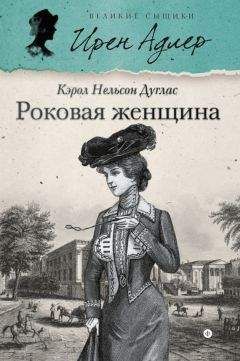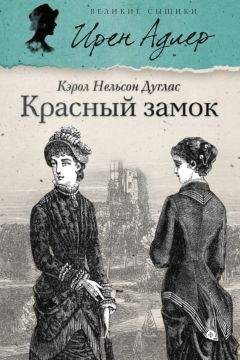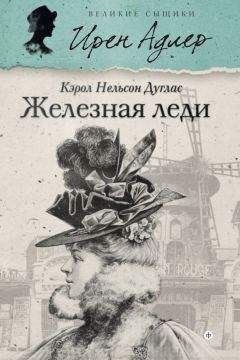Дуглас Кенрик - Рациональное животное. Как эволюция повлияла на развитие мозга
И Дуглас и Влад также благодарны оказавшему большую под- держку редактору Т. Дж. Келлхеру, выпускающему редактору Сандре Берис и литературному агенту Джиму Левину.
Список использованной литературы
1. Abraham, Tamara 2012. “Is testosterone the new drug of choice on Wall Street? How traders are using male hormone booster shots to maintain a competitive edge”. Daily Mail, February 10. http://www.dailymail.co.uk/ femail/article-2099372/Is-testosterone-new-drug-choice-Wall-Street-How- traders-using-male-hormone-booster-shots-maintain-competitive-edge.html.
2. Ackerman, J. M., D.V. Becker, C.R. Mortensen, T. Sasaki, S.L. Neuberg, and D.T. Kenrick. 2009. “A pox on the mind: Disjunction of attention and memory in the processing of physical disfigurement”. Journal of Experimental Social Psychology 45, 478–485.
3. Ackerman, J. A., V. Griskevicius and N.P. Li. 2011. “Let’s get serious: Communicating commitment in romantic relationships”. Journal of Personality and Social Psychology 100, 1015–1026.
4. Ackerman, J. M., J.R. Shapiro, S.L. Neuberg, D.T. Kenrick, D.V. Becker, V. Griskevicius, J.K. Maner and M. Schaller, M., 2006. “They all look the same to me (unless they’re angry): From out-group homogeneity to out-group heterogeneity”. Psychological Science 17, 836–840.
5. Aktipis, C. A., and R. Kurzban. 2004. “Is homo economicus extinct? Vernon Smith, Daniel Kahneman and the evolutionary perspective”. In R. Koppl (Ed.), Advances in Austrian economics. 7: 135–153. Amsterdam: Elsevier.
6. Alcock, J. 2013. Animal Behavior: An Evolutionary Approach (10th edition). Sunderlend. MA: Sinauer Associates.
7. Alicke, Mark D., D. A. Dunning and J.I. Kruger. 2005. The Self in Social Judgment. New York: Psychology Press.
8. Anderson, C., S. Brion, D. M. Moore, and J.A. Kennedy. 2012. “A status- enhancement account of overconfidence”. Journal of Personality and Social Psychology 103: 718–735.
9. Anderson, S. 2007. “The economics of dowry and brideprice”. Journal of Economic Perspectives. 21, № 4 (fall), 151–174.
10. Andrews, M. W., and L.A. Rosenblum. 1991. “Attachment in monkey infants raised in variable-demand and low-demand environments”. Child Development 62, 686–693.
11. Ariely, D. 2008. “Predictably Irrational”. New York: Harper Collins. (Издание на русском языке: Ариели Д. Предсказуемая иррациональность. — М.: Манн, Иванов и Фербер, 2010.)
12. Arnett, J. J, and J. Schwab, 2012. “The Clark University poll of emerging adults”/ Clark University, December 2012, // http://www.clarku.edu/ clarkpoll/pdfs/Clark_Poll_Peer%20Inst.pdf.
13. Arrington, Michael. 2011. “Internet entrepreneurs are like professional athletes, they peak around 25”. Tech crunch, Saturday April 30, http:// techcrunch.com/2011/04/30/internet-entrepreneurs-are-like-professional- athletes-they-peak-around-25/.
14. Autoblog. 2011. “First Fisker Carma headed to Leonardo DiCaprio, Colin Powell and Al Gore soon after”. Autoblog, July 13 http://www.autoblog. com/2011/07/13/first-fisker-karma-headed-to-leonardo-dicaprio-colin- powell-and/.
15. Axelrod, R., and W.D. Hamilton. 1981. “The evolution of cooperation”. Science 211: 1390–1396.
16. Bailey, J. M., S.Gaulin, Y.Agyei, and B.A. Gladue. 1994. “Effects of gender and sexual orientation on evolutionarily relevant aspects of human mating psychology”. Journal of Personality and Social Psychology. 66: 1081–1093.
17. Baize, H. R., and J.E. Schroeder. 1995. “Personality and mate selection in personal ads: Evolutionary preferences in a public mate selection process”. Journal of Social Behavior and Personality. 10: 517–536.
18. Baker, M. D., and J.K. Maner. 2009. “Male Risk-Taking as a Context-Sensitive Signaling Device”. Journal of Experimental Social Psychology. 45: 1136–1139.
19. Baker, M., and J.K. Maner. 2008. “Risk-Taking as a Situationally Sensitive Male Mating Strategy”. Evolution and Human Behavior. 29: 391–395.
20. Barrett, H. C., and R. Kurzban. 2006. “Modularity in cognition: Framing the debate”. Psychological Review. 113: 628–647.
21. Baumeister, R. R, and M.R. Leary. 1995. “The need to belong: Desire for interpersonal attachments as a fundamental human motivation”. Psychological Bulletin. 117: 497–529.
22. Baumeister, Roy F. and Kathleen D. Vohs 2004. “Sexual Economics: Sex as Female Resource for Social Exchange in Heterosexual Interactions”. Personality and Social Psychology Review 8, (4): 339–363.
23. BBC News. 2002. “Famine-hit Zambia rejects GM food aid”. BBC News, October 29, http://news.bbc.co.uk/2/hi/africa/2371675.stm.
24. Beaumont, P. “Starving Afghans sell girls of eight as brides”, Guardian, January 6 http://www.guardian.co.uk/world/2007/jan/07/afghanistan. peter-beaumont.
25. Becker, D. V., U.S.Anderson, S.L. Neuberg, J.K. Maner, J.R. Shapiro, J.M. Ackerman, M. Schaller and D.T. Kenrick. 2010. “More memory bang for the attentional buck: Self-protection goals enhance encoding efficiency for potentially threatening males”. Social Psychological and Personality Science. 1: 182–189.
26. Becker, D. V., D.T. Kenrick, S.L. Neuberg, K.C. Blackwell and D.M. Smith. 2007. “The confounded nature of angry men and happy women”. Journal of Personality and Social Psychology. 92: 179–190.
27. Belanger, D., and G. L. Tran. 2011. “The impact of transnational migration on gender and marriage in sending communities of Vietnam”. Current Sociology. 59: 59–77.
28. Belsky, J., R. M. Houts, and R. M. P. Fearon. 2010. “Infant attachment security and timing of puberty: Testing an evolutionary hypothesis”. Psychological Science. 21: 1195–1201.
29. Belsky, J., L. Steinberg, L., and P. Draper. 1991. “Childhood experience, interpersonal development, and reproductive strategy: An evolutionary theory of socialization”. Child Development. 62: 647–670.
30. Bird, Rebecca Bliege and Eric Alden Smith. 2005. “Signaling Theory, Strategic Interaction, and Symbolic Capital”. Current Anthropology. 46 (2): 221–248.
31. Borgia, Gerald. 1985. “Bower quality, number of decorations and mating success of male satin bowerbirds (prilonorhynchus violaceus): an experimental analysis”. Animal Behavior. 33: 266–271.
32. Boucher, D. H. ed. 1985. The biology of mutualism. — New York: Oxford University Press.
33. Branch, T. 1988. Parting the waters: America in the King years, 1954–1963. New York: Simon & Schuster.
34. Bronfenbrenner, M., W. Sichel, and W. Gardner. (1990). Economics (23rd ed.). Boston: Houghton Mifflin.
35. Burnham, Terence C., 2007. “High-testosterone men reject low ultimatum game offers”. Proceedings of The Royal Society B 274: 2327–2330.
36. Burnstein, E., C. Crandall, and S. Kitayama. 1994. “Some neo-Darwinian decision rules for altruism: Weighing the cues for inclusive fitness as a function of the biological importance of the decision”. Journal of Personality and Social Psychology. 67: 773–789.
37. Buss, D. M. 1989. “Sex differences in human mate preferences: Evolutionary hypotheses tested in 37 cultures”. Behavioral and Brain Sciences. 12: 1–49.
38. Buss, D. M. 2005. The Handbook of Evolutionary Psychology. Wiley: New York.
39. Buss, D. M., T. K. Shackelford, L. A. Kirkpatrick, J. C. Choe, H. K. Lim, M. Hasegawa, T. Hasegawa, and K. Bennett. 1999. “Jealousy and the nature of beliefs about infidelity: Test of competing hypotheses about sex differences in the United States, Korea, and Japan”. Personal Relationships. 6: 125–150.
40. Camerer, C. F. 2003. Behavioral game theory: Experiments in strategic interaction. New York: Russell Sage Foundation.
41. Carroll S.B. 2009. Remarcable creatures: epic adventures in the search of the origin of species. Orlando, FL: Houghton Mifflin Harcourt.
42. Cheney, K. L., and I. M. Cote. 2005. “Frequency-dependent success of aggressive mimics in a cleaning symbiosis”. Proceedings of the Royal Society B. 272: 2635–2639.
43. Cheng, J. T., J. L. Tracy, T. Foulsham, A. Kingstone, and J. Henrich. 2013. “Two ways to the top: Evidence that dominance and prestige and distinct yet viable avenues to social rank and influence”. Journal of Personality and Social Psychology. 104: 103–125.
44. Chisholm, J. S. 1993. “Death, hope, and sex: Life-history theory and the development of reproductive strategies”. Current Anthropology. 34: 1–24.
45. Cialdini, R. 2008. The Psychology of Influence (5th edition). Boston: Allyn & Bacon. (Издание на русском языке: Чалдини Р. Психология влияния. — СПб.: Питер, 2013.)
46. Clark, R. D., and E. Hatfield. 1989. “Gender differences in receptivity to sexual offers”. Journal of Psychology & Human Sexuality. 2: 39–55.
47. Collier, P., and D. Horowitz. 1984. The Kennedys: An American drama. New York: Warner / Simon & Schuster. (Издание на русском языке: Горовиц Д., Кольер П. Клан Кеннеди. Американская драма. — М., 1988.)
48. Collins, L., and D. LaPierre, D. 1975. Freedom at midnight. New York: Simon & Schuster.
49. Confer, J. C., J.A. Easton, D.S. Fleischman, C.D. Goetz, D.M Lewis, C. Perilloux, and D.M. Buss. 2010. “Evolutionary psychology: Controversies, questions, prospects, and limitations”. American Psychologist. 65: 110–126.
50. Cosmides, L. 1989. “The logic of social exchange: Has natural selection shaped how humans reason? Studies with the Wason selection task”. Cognition/ 31:187–276.
51. Cosmides, L. and J.Tooby. 1992. “Cognitive adaptations for social exchange. In J. Barkow, L. Cosmides, & J. Tooby (Eds.), The adapted mind: Evolutionary psychology and the generation of culture. New York: Oxford University Press. (Издание на русском языке: Туби Дж., Космидес Л. Когнитивная психология: история и современность. Хрестоматия. — М., 1994, 2011.)
52. Cosmides, L., and J. Tooby. 1994. “Better than rational: Evolutionary psychology and the invisible hand”. The American Economic Review. 84:327–332.
53. Crawford C. and D. Krebs. 2008. (Eds.), Foundations of Evolutionary Psychology. New York: Lawrence Erlbaum Associates.
54. D’Estries, M. 2012. “J. K. Rowling’s charity giving knocks her off Forbes’ billionaires list”. Mother Nature Network, March 13, 2012.
55. Dabbs, J. M., and R. Morris. 1990. “Testosterone, social class, and antisocial behavior in a sample of 4,462 men”. Psychological Science, 1, 209–211.
56. Daly, M., and M. Wilson. 1988. Homicide. New York: Aldine de Gruyter.
57. Daly, Martin, and Margo Wilson. 1998. The Truth About Cinderella. New Haven: Yale University Press.
58. Davies, N. B., and M de L. Brooke. 1988. “Cuckoos versus reed warblers: Adaptations and counteradaptations”. Animal Behaviour, 36, 262–284.
59. De Fraja, Gianni 2009. “The Origin of Utility: Sexual Selection and Conspicuous Consumption”. Journal of Economic Behavior & Organization, 72, 2009, 51–69.
60. DeBruine, L. M. 2002. “Facial resemblance enhances trust”. Proceedings of the Royal Society of London B, 269 (1498): 1307–1312.
61. Del Giudice, M. 2009. “Sex, attachment, and the development of reproductive strategies. Economic uncertainty and life history strategies”. Behavioral and Brain Sciences. 32: 1–21.
62. DiNapoli, T. P. 2008. “2008 comptroller’s report of the financial condition of New York State”. Retrieved from http://www.osc.state.ny.us/finance/ finreports/fcr08.pdf.
63. Dial the Truth Ministries. n.d “Premature Death of Rock Stars”. Dial the Truth Ministries, http://www.av1611.org/rockdead.html
64. Dubner, Stephen J. 2011. “Hey baby, is that Prius you’re driving?” http://www.freakonomics.com/2011/07/07/hey-baby-is-that-a-prius- you%E2%80%99re-driving/.
65. Dunbar, Robin, & Barrett, Louise 2009. Oxford Handbook of Evolutionary Psychology. Oxford University Press.
66. Durante, K. M., V. Griskevicius, S.M. Cantu, S. M., J.A. Simpson, and J.M. Tybur. 2012. “Sex ratio and women’s careers: Does a scarcity of men lead women to choose briefcase over baby?”. Journal of Personality and Social Psychology. 103: 121–134.
67. Durante, K. M., V. Griskevicius, S.E. Hill, C. Perilloux, and N.P. Li. 2011. “Ovulation, female competition, and product choice: Hormonal influences on consumer behavior”. Journal of Consumer Research. 37: 921-934.
68. Durante, K. M., V. Griskevicius, J.A. Simpson, S.M. Cantu and N.P. Li. 2012. “Ovulation leads women to see sexy cads as good dads”. Journal of Personality and Social Psychology. 103: 292–305.
69. Ellis, B. J. 2004. “Timing of pubertal maturation in girls”. Psychological Bulletin. 130: 920–958.
70. Ellis, B. J., A. J. Figueredo, B.H. Brumbach, and G.L. Schlomer. 2009. “Fundamental dimensions of environmental risk: The impact of harsh vs. unpredictable environments on the evolution and development of life history strategies”. Human Nature. 20: 204–268.
71. Emlen, S. T., P.H. Wrege, and N.J. Demong. 1995. “Making decisions in the family: An evolutionary perspective”. American Scientist. 83: 148–157.




